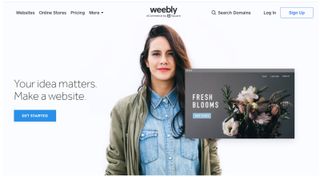It's often said that women need more encouragement than men to apply: Tiffany Conroy is providing that encouragement with weareallaweso.me.
.net: What do you aim to do with weareallaweso.me?
TC: I have one goal: get more women to submit talk proposals to tech conferences. Rather than ask conference organisers to seek more women speakers, I'm putting the responsibility onto women themselves to offer themselves as speakers. We need to make it as easy to choose a qualified woman to speak as it is to choose a qualified man. The people who speak at our conferences are the same people who lead our community.
I was inspired by Courtney Stanton whose blog post on getting more women to speak at her conference was all over my Twitter stream when it came out. She explained from her first-hand experience that women need aggressive encouragement before they will submit a proposal, but men need none. Of course, there are exceptions – men who need aggressive encouragement and women who don't – but on the whole, that was her experience, and I can believe it.
I've already made the transition from spectator to speaker, so the next move for me is to become a mentor and cheerleader. I needed mentoring and cheerleading, and now it's my turn to pass that on. If I'm going to have a real effect beyond just one conference and the few women I know personally, I needed to rally others, and put my message out there where others can find it on their own.
.net: Why do we need projects that seek to increase the participation of women?
TC: Too often the current tech culture is an embarrassment to many of its community members, both women and men. Too many people just don't see when they are exclusive or sexually inappropriate in a professional setting. The best way to change the culture is for women to participate in it.
.net: Tell us about the response you've had.
TC: My original three tweets about the site were retweeted hundreds of times in less than a day, which is the response I consider most significant. The concept resonated far deeper than I expected. It felt fantastic, and a bit overwhelming.
Other than the retweets, I got two kinds of responses in about equal amounts. The first was from people who called it a great idea, and thanked me. The second was from people who all said a variation of “I don't care what gender the speaker is, I just want great speakers.”
I tried to respond to as many of the tweets from the second group as possible, since I actually agree with them, with two significant clarifications. First, lots of women who could be great speakers aren't submitting talk proposals at all, so they never make it onto the stage. Second, by staying quiet, women are staying invisible, which doesn't help change the culture.
.net: Some people don't like "women in tech" initiatives on the grounds that they are divisive. (For example, this is a recent post from Amber Weinberg.) What do you think of this perspective?
TC: There is a huge difference between self-segregation and encouraging women to be active participants in the larger tech community. I agree that women should not segregate themselves in to gender-based clubs. This effort is not a "women in tech" initiative in the way most people mean when they say they dislike "women in tech" initiatives. I'm telling women to join the crowd, not form a group within or outside of it. Other people have picked up on that as well, which means I am communicating that idea, just not everyone is hearing it.
.net: What would you say to women who are put off speaking by the sexism and nastiness that some women in the industry have experienced?
TC: I've noticed a distinct turn in the past year in the industry. Many men also have a heightened awareness of sexism when they experience it, and are upset not only by the sexism itself, but also by being, as men, associated with it. Such nastiness is attacked immediately. For example, the blog Programmers Being Dicks is curated by a man. So, the community support is there, not just from the increasing number of high-profile women in the industry but from the majority of the entire community.




